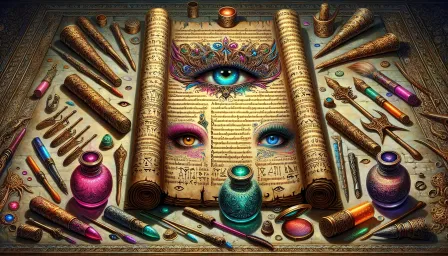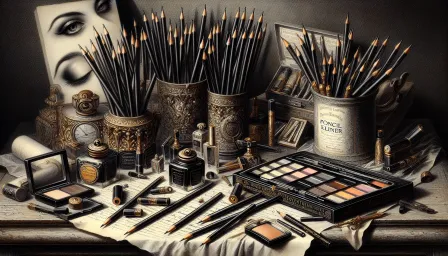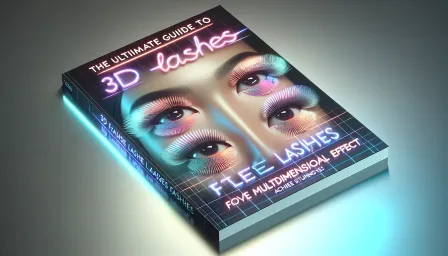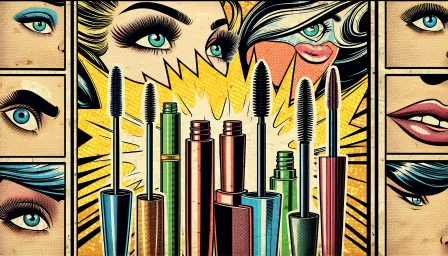The Evolution of Beauty: Exploring Historical Changes in Beauty Standards
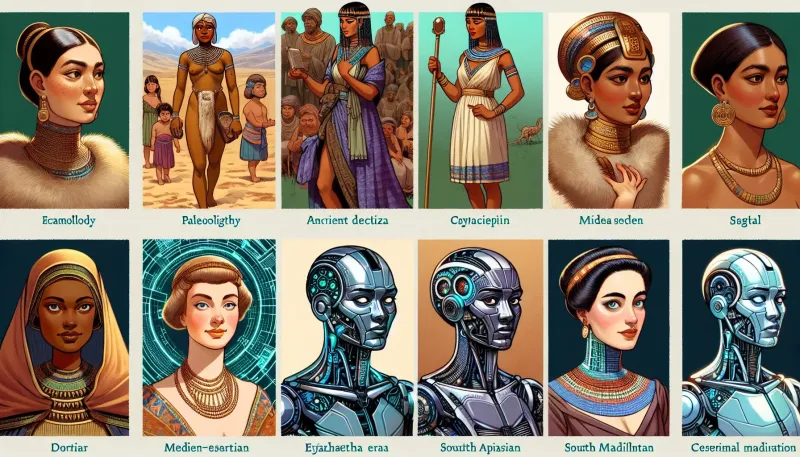
Dive into the historical changes in beauty standards across different eras and cultures. Understand how beauty ideals have evolved and shaped human perception.
Beauty standards have continuously evolved, reflecting the social, cultural, and economic changes of different eras. As we traverse through history, it is fascinating to observe how varying ideals of beauty have shaped human perception. By understanding historical changes in beauty standards, we gain insights into how contemporary ideals are influenced and constructed.
Beauty Standards in Ancient Civilizations
Ancient Egypt
Ancient Egyptian beauty standards were centered around symmetry, youthfulness, and health. Both men and women used cosmetics not only for aesthetic purposes but also for spiritual and health reasons. Kohl eyeliner was popularized to protect eyes from the harsh sun and to ward off evil spirits. Women aspired to have slim, high-waisted figures, long hair, and almond-shaped eyes — features that were often immortalized in hieroglyphs and tomb art.
Ancient Greece and Rome
In ancient Greece, the ideal of beauty was heavily influenced by their view of harmony and proportion. Men were depicted with muscular, athletic bodies, while women were admired for their curvaceous yet slender figures. Pale skin was highly coveted as it represented purity and a life of leisure. The Romans followed similar beauty ideals but emphasized hygiene and skincare, with both men and women using various oils and lotions to maintain their appearance.
Han Dynasty China
In ancient China, particularly during the Han Dynasty, beauty standards emphasized delicacy, elegance, and slenderness. Pale skin was synonymous with nobility and high status. Women enhanced their beauty using rice powder to achieve a fair complexion, and they adorned themselves with elaborate hairstyles and garments. Small feet and a petite frame were considered highly desirable.
The Middle Ages and Renaissance
Medieval Europe
The Middle Ages in Europe saw an interesting blend of beauty standards, characterized by modesty and religious influence. Women were expected to have pale skin, as it indicated a life spent indoors away from manual labor. High foreheads were also in vogue, often achieved by plucking the hairline. Modesty in attire and behavior was emphasized, and cosmetics were used sparingly.
The Renaissance
The Renaissance period marked a shift towards more opulent and pronounced beauty ideals. Fuller figures became a symbol of wealth and fertility. Women aspired to have voluptuous bodies, rounded stomachs, wide hips, and fair skin. Art from this era showcases prominent figures like Botticelli’s Venus, embodying these Renaissance ideals. Cosmetics and elaborate hairstyles were widely used to enhance one’s appearance.
18th and 19th Centuries
The Enlightenment Era
The 18th century, particularly during the Enlightenment, brought about sophisticated and elaborate beauty standards. Women's fashion featured extravagant wigs, powdered hair, and bold makeup, including brightly colored cheeks and lips. Men also engaged in beautification practices, albeit more restrained. Pale skin continued to be desirable, enhanced through various whitening agents.
The Victorian Era
The 19th century Victorian era ushered in a period of conservatism and modesty. Women were expected to embody virtue and purity, with a renewed emphasis on natural beauty. Corsets were widely used to shape the body into an hourglass figure, and makeup was used discreetly. Pale skin remained fashionable, symbolizing delicacy and femininity.
20th Century to Present
The Roaring Twenties
The 1920s were a revolutionary period for women's beauty standards. Known as the Flapper era, women embraced a more androgynous and liberated appearance. Short bobbed haircuts, straight figures, and dramatic makeup, including dark eyes and bold lips, became the hallmark of this era. It was a significant departure from the previous Victorian modesty.
The Golden Age of Hollywood
The 1930s to 1950s, often referred to as the Golden Age of Hollywood, saw beauty influenced heavily by cinema. Stars like Marilyn Monroe and Audrey Hepburn set trends with their glamorous and polished looks. Curvaceous bodies, styled hair, and flawless makeup became the gold standard of beauty. This period celebrated femininity and star power.
The Swinging Sixties and Beyond
The 1960s brought a wave of youthful rebellion and countercultural movements that influenced beauty standards. Twiggy’s waif-like figure and large eyes became iconic, representing a more youthful and streamlined ideal. The decades that followed saw fluctuating beauty standards, from the athletic physiques of the 1980s supermodels to the diversity and body positivity movements of the 21st century. Modern beauty standards are increasingly inclusive, celebrating various body types, skin tones, and individual expressions of beauty.
Conclusion
Understanding the historical changes in beauty standards offers invaluable insights into how societal norms and values shape our perception of beauty. Each era’s particular ideals are a reflection of its cultural and social dynamics. As we continue to witness the evolution of beauty standards, one thing remains constant: the concept of beauty is ever-changing, influenced by a complex interplay of factors, and ultimately, deeply personal and subjective.








